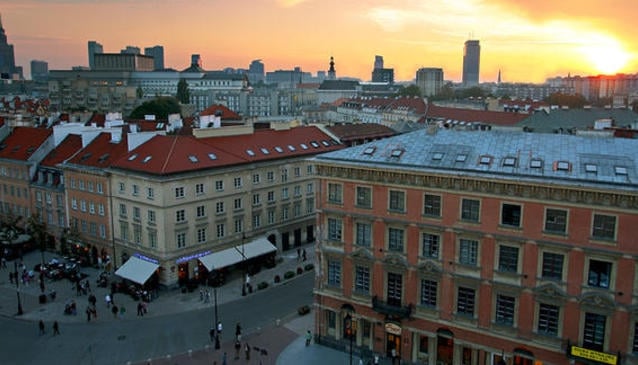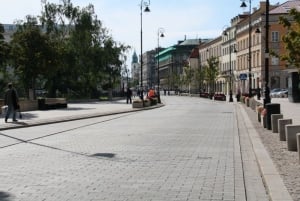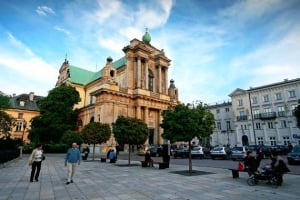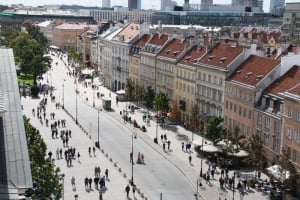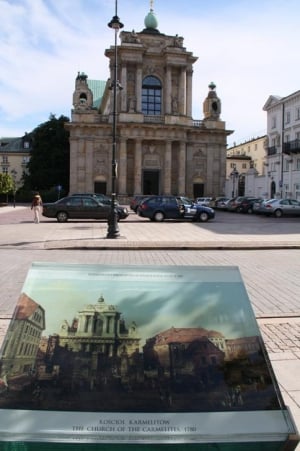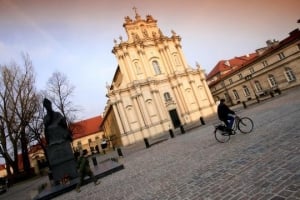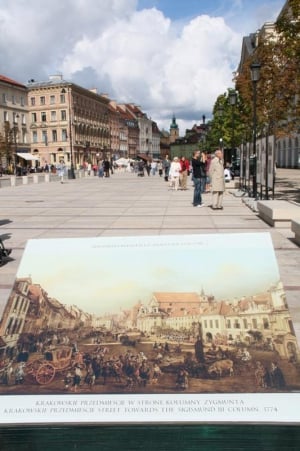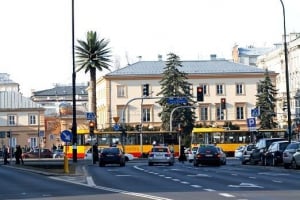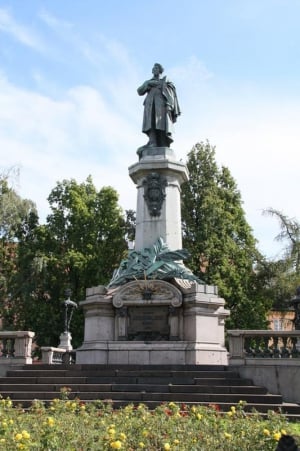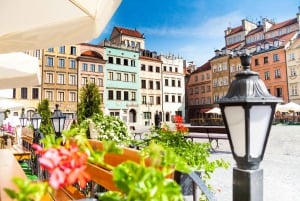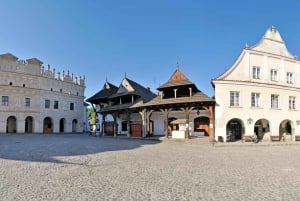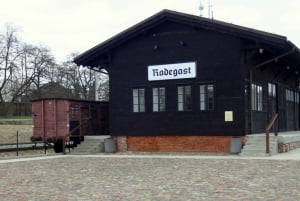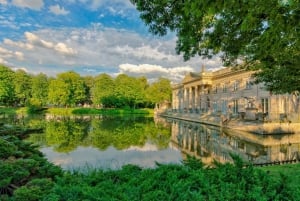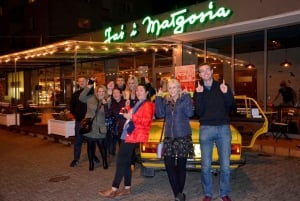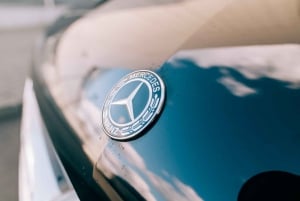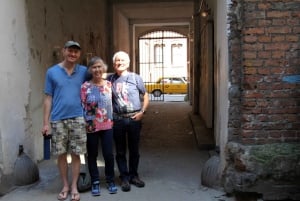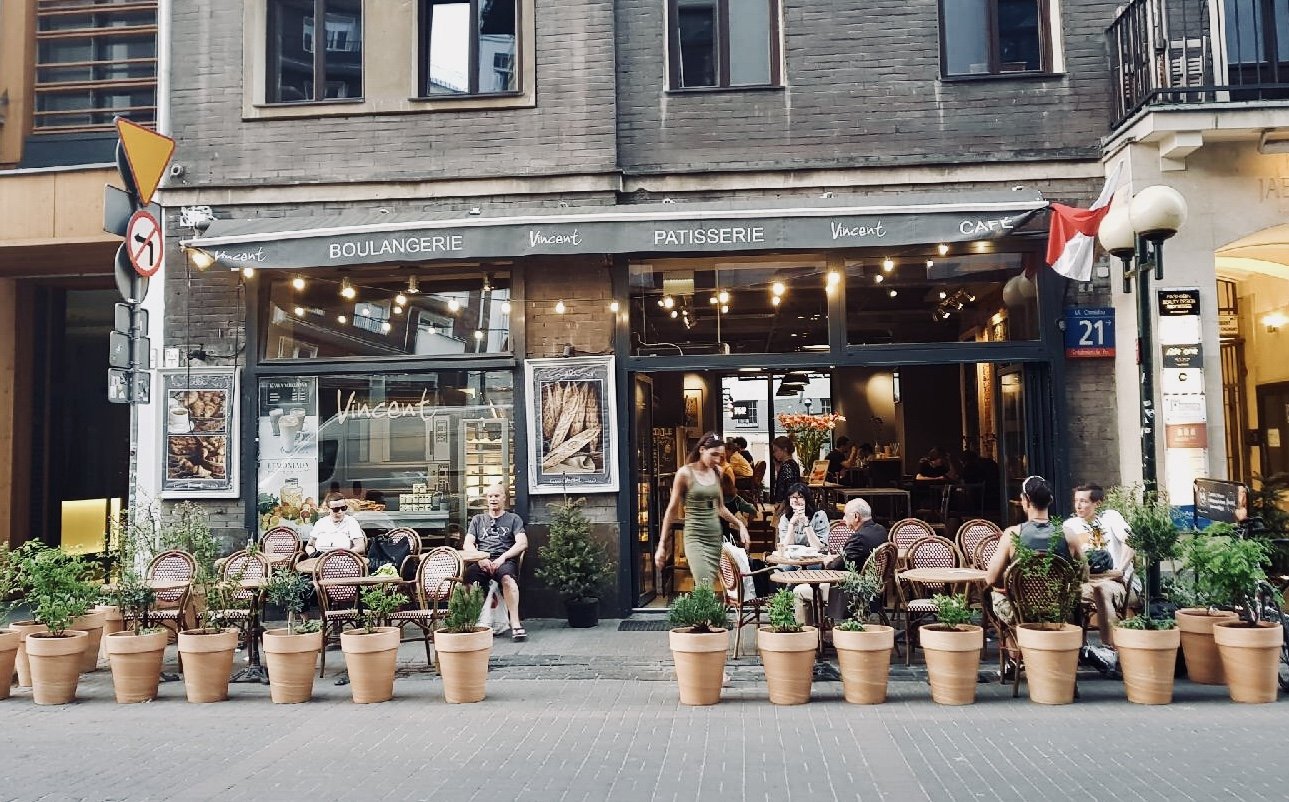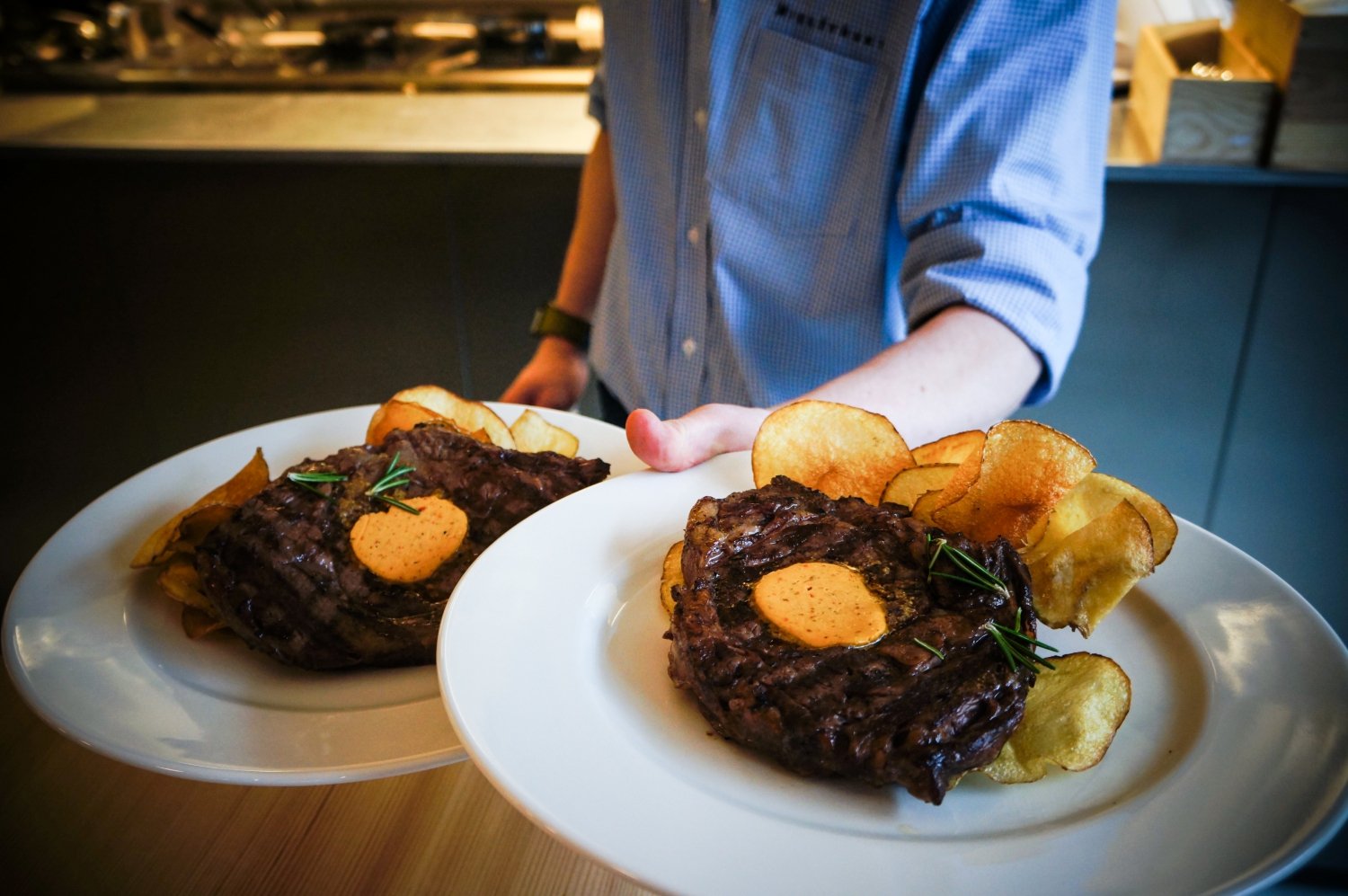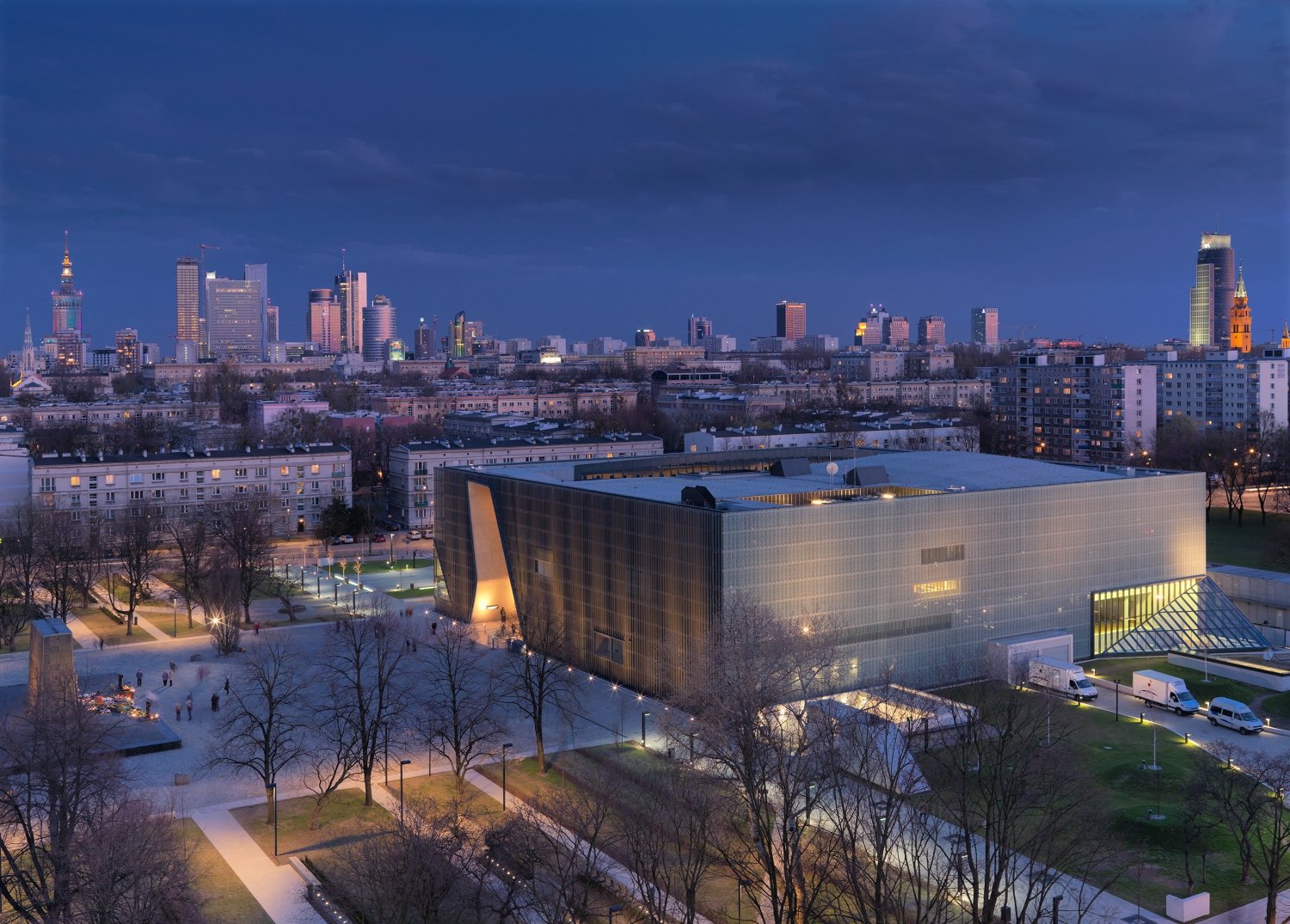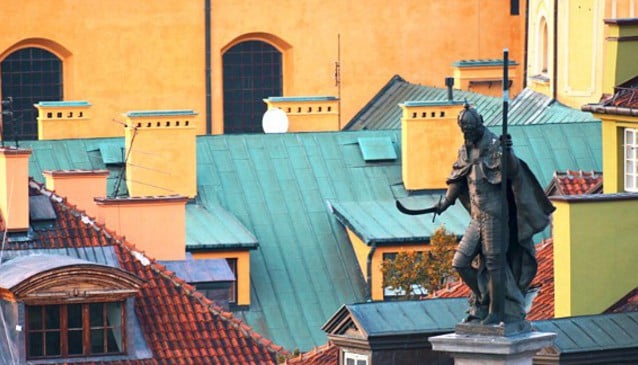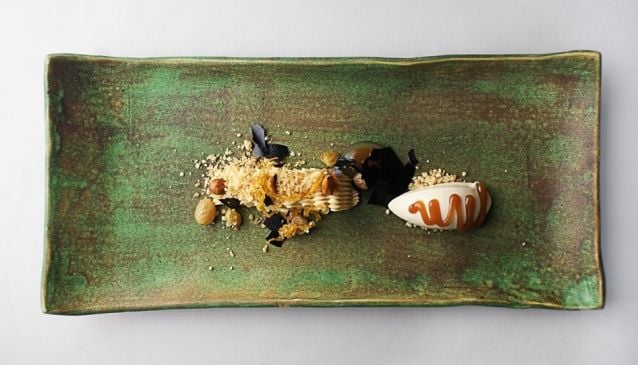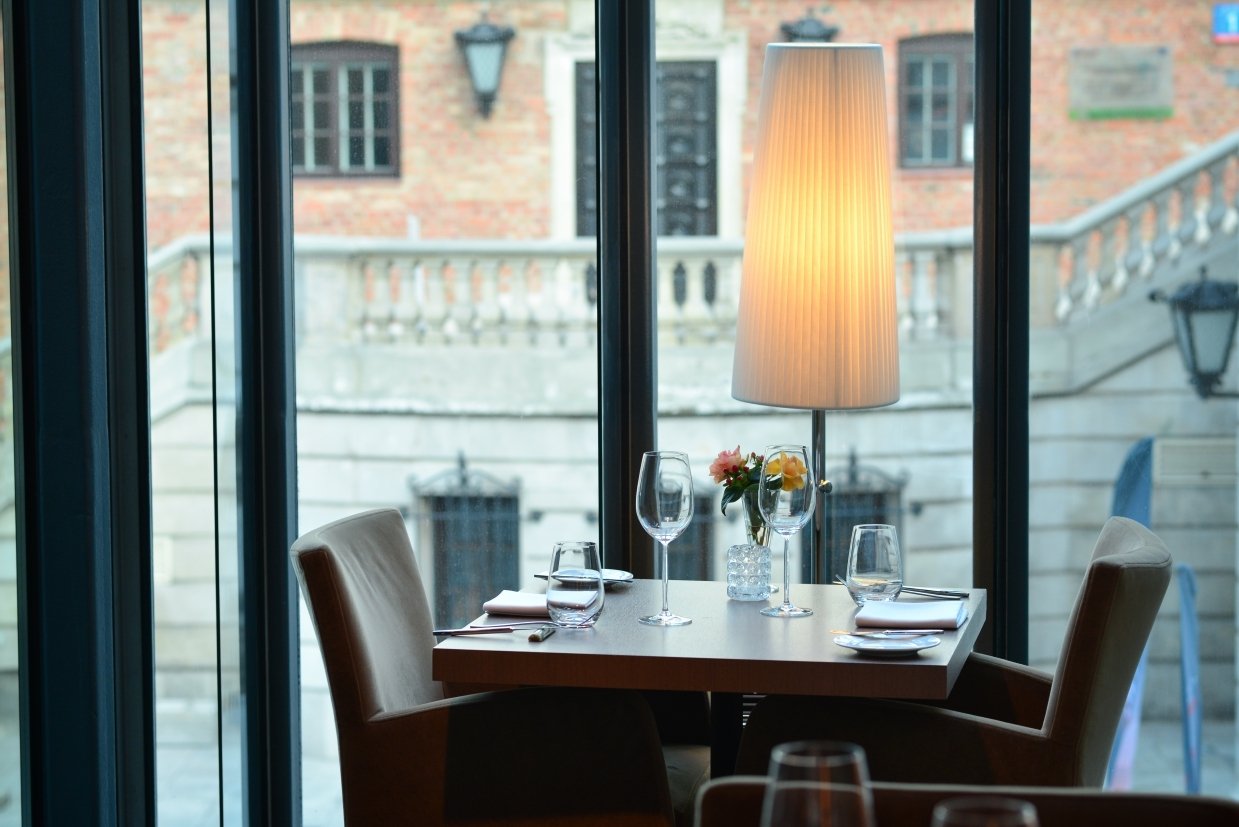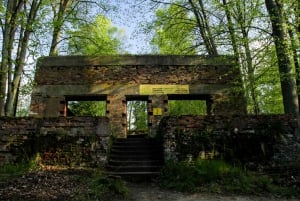
My Guide Website?
Krakowskie Przedmiescie
Warsaw
The Royal Avenue covering part of the Royal Route.
Krakowskie Przedmiescie is Warsaw at its most elegant. Recent renovations have made this wide avenue into a cobbled pedestrian zone, bordered by wide stretches of gleaming white pavement, old-fashioned lampposts, and glass display cubes showing 18th-century Canaletto paintings of the city.
The street was originally laid out in the 15th century as a trade route leading up to the gates of Warsaw's defensive walls. After Warsaw became Poland's royal capital at the end of the 16th century, influential noblemen began building grand palaces along this main road into the city. By the 19th century, the area had been embellished with some baroque-style churches and classy townhouses.
The first building off Castle Square is the palatial St. Anne's Church, the original structure dating from 1454, but remodeled many times in its history. What you see today reflects the church's 1788 reconstruction; although it was damaged during the Second World War, it was not entirely destroyed, making it one of the oldest surviving buildings in Warsaw today. It was in front of this church that the rulers of 16th- and 17th-century Prussia once paid homage to Polish monarchs.
In a small patch of lawn just off the main road stands a towering many-layered monument to the most famous Polish poet of all time, Adam Mickiewicz. This visionary romantic, born under the Tsarist occupation of the 19th century, kept the spirit of Poland alive in his epic poems. The original statue was presented to the public on the 100th anniversary of the poet's birth, in 1898. It was almost completely destroyed during the Second World War, and its least damaged parts were shipped to Germany; Polish soldiers later recovered the head, torso and other fragments of the statue in Hamburg, using them to create a replica in 1950. The monument became the center of the March 1968 protest when Mickiewicz's historical play Dziady, with its thinly-veiled patriotism, was banned by the Soviet authorities.
The Carmelite Church of the Assumption of the Virgin Mary and St. Joseph, located just beyond Mickiewicz's monument, dates from the 18th century and features a rather originally-shaped façade, with urn-like towers and heavily ornate colonnades, and a rich rococo interior. The great composer Fryderyk Chopin had his first job here, giving a performance on the church organ.
The Presidential Palace, next in the line of Krakowskie Przedmiescie's monumental buildings, is hard to miss. It's the largest palace in Warsaw, and its brilliant white exterior masks a rather colourful history. It was commissioned in 1643 by the Crown Hetman Stanislaw Koniecpolski. Over the following 200 years it was owned by several great noblemen, and was the setting for feasts and balls that included the cream of Polish society. Under the Russian regime of the 19th century, the palace hosted balls honouring the Tsar's visits. In 1918 it became the seat of the Prime Minister of newly-independent Poland. During World War II, the palace interior was completely redesigned to accommodate a luxury hotel and German casino. Renovated again after the war, it was used by the postwar government for meetings and councils. The Warsaw Pact was signed here in 1955. Round Table meetings gathered here in 1989. In 1994, the palace became the official residence of the President of Poland.
Although the Presidential Palace isn't open to visitors, you can stand on the sidewalk and gaze across the long, rectangular flower beds at the impressive rows of windows surrounding the central courtyard. The massive statue in the centre is of Prince Jozef Poniatowski, nephew to the last king of Poland, hero of the 1794 Kosciuszko Uprising against the Russian army and Marshal to Napoleon, who was killed in battle at Leipzig in 1813. The original monument was created by a Danish sculptor, and after it was destroyed in the Second World War, the city of Copenhagen presented Warsaw with a replica.
Next to the Presidential Palace stands the Hotel Bristol, a luxurious establishment built around 1900 which quickly became a favourite among Warsaw's elite. It counts American Presidents Kennedy and Nixon, as well as Pablo Picasso, among its guests. The atmosphere of that former era still lingers in its foyer, elegant rooms and high-class restaurant.
The University of Warsaw, with its ornate gates opening onto Krakowskie Przedmiescie, is the largest and one of the most prestigious in Poland. It was founded in 1816, and has grown from the original five to nineteen departments. It has also taken over a cluster of palaces and historic buildings, including Kazimierzowski Palace (now the rector's office), built in the 17th century as a suburban royal villa and later transformed into a university for noble youths, attended by the famed patriot, instigator of the 1794 uprising and hero of the American Revolution, Tadeusz Kosciuszko. When the palace later became a secondary school, it was attended by Fryderyk Chopin.
Across from the university is a large, grapefruit-coloured palace with decorative trim like sugar icing. Generally known as the Czapski Palace - after one of its series of noble owners - it is now the seat of the Academy of Fine Arts. Tourists are generally interested in one small part of the left annex, which by the 19th century had been transformed into independent flats. This was Fryderyk Chopin's last home before he emigrated to Paris. Chopin's Salon is a branch of the Fryderyk Chopin Museum, and is open to visitors.
Further along is the Church of the Holy Cross, perhaps the most famous church in Warsaw. It was here that, in 1683, King Jan III Sobieski prayed for the fate of his country before heading off on his military campaign to Vienna, where his armies ultimately defeated the Turks. But most famously today, it is known as the resting-place of Chopin's heart. It was the composer's last wish to have his heart returned to his homeland after his death, and it is now contained in an urn in one of the church pillars. On the front steps stands a statue of Christ carrying the cross, one arm outstretched and pointing upward in a gesture of hope. It was added to the church in the late 19th century, following some of the most brutal years of the Russian partition.
Krakowskie Przedmieście is full of restaurants and cafés located along the street. One of them is Batida, where you can taste the delicious pastries, cocktails and sweets.
Budget
- Free
Best For Whom
- Backpackers
- Business Travellers
- Groups
Best For What
- Relaxation
- The Local Experience
 Book Now!
Krakowskie Przedmiescie
Book Now!
Krakowskie Przedmiescie




